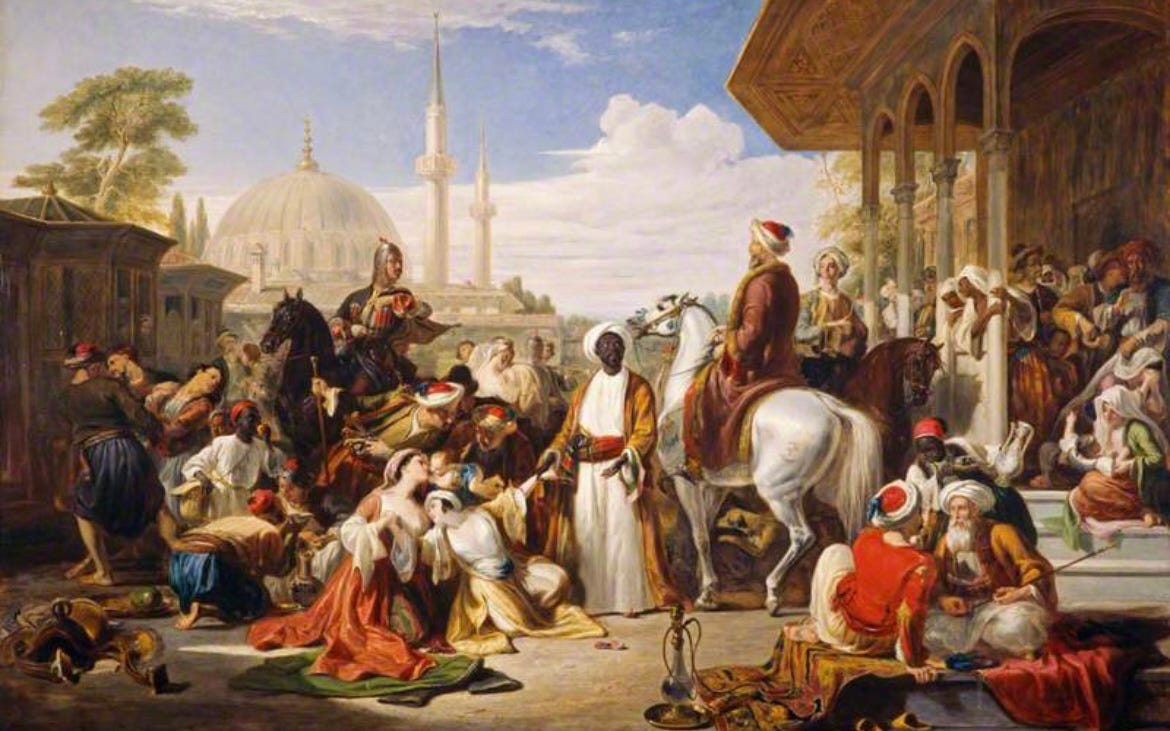Jókai Mór's "The Golden Age in Transylvania" - Chapter 2 Commentary
"100 Days of Jókai Mór" February 1- April 30, 2025
100 Days of Jókai Mór" February 1 - April 30, 2025
"The Golden Age in Transylvania"
By Jókai Mór
April 9, 2025
Chapter 2
Excellent reader observations about Chapter 1!!! Yes, hunting was a crucial occupation that trained men and women and helped them develop skills that are essential for combat and warfare. The Balkans and Southern and Central Europe were under Turkish occupation or under continuous threat of invasion since the Turkish armies took the capital of the Eastern Roman Empire Constantinople in 1453, renamed it Istanbul, and advanced north - Buda becoming the most northern city of the Turkish Ottoman Empire (see my history notes from January and February). And yes, the hunting scenes in War and Peace (we read it in the spring of 2021!!!) are essential for our understanding of the characters - and their future engagements on the battlefields of the Napoleonic Wars.
Miklós Zrínyi’s epic poem about his great grandfather’s military campaigns against Turkish armies and his heroic death at the Battle of Szigetvár in 1566 is unique in the European epic tradition. Inspired by Homer and Virgil, written in Hungarian in 1648–1649, and published in Vienna in 1651, The Peril of Sziget (Szigeti veszedelem) was among the first modern European epics to resurrect the epic tradition of Ancient Greece and Rome, along with Torquato Tasso‘s (1544-1595) The Liberation of Jerusalem (La Gerusalemme liberata), which was published in 1581 and served as a literary model for Zrínyi, and John Milton’s (1608-1674) Paradise Lost (we read it in the fall of 2020!!!), published in 1667, 18 years after the composition of Zrínyi’s epic poem!!! Three cheers for Hungarian literature!!!
And in the context of Chapter 2, I need to make yet another literary connection. European slavery in Ottoman Turkey started in the 15th century - the Istanbul slave market, described by Lord Byron in his 1819-1824 epic poem “Don Juan” (we read it in the summer of 2023!!!), did not close till 1848 - yet white slavery continued in the Turkish Empire till after WWI… The Tatars of Crimea abducted and sold 2 million Slavs from today’s Russia, Ukraine, and Belorussia into Turkish slavery - thus the origin of the world slave (from Slav)… Additionally, 1.5 to 2 million Europeans were taken to Turkish slave markets between the 16th and the 19th centuries - and millions more from North Africa and the Middle East. The Turkish sultana Roxelana (c.1504-1558), wife of Suleiman the Magnificent, was born on the territory of today’s Ukraine, abducted and sold at a slave market in Istanbul, purchased for the sultan’s harem, and became the most powerful woman in the Ottoman world (see my history note on women rulers!!!).
The Spanish writer Miguel de Cervantes Saavedra (1547-1616), author of Don Quixote, was abducted into slavery in 1575 by Barbary pirates while returning to Spain and taken to Algiers - where he languished while waiting for ransom for 5 years - a fate similar to the Transylvanian prince Mihály (Michael) I Apafi (1632-1690) - whose return home is described in Chapter 2. Cervantes was eventually ransomed by his parents with the assistance of Trinitarian monks who raised 500 gold coins to assist with his liberation. In his will, Cervantes asked to be buried in the Trinitarian monastery in Madrid - today still inhabited by cloistered nuns!!! I walked by the walls of this monastery while visiting Madrid and marveled at the complex and astonishing history of the place!!!
AND - we are reading another Jókai novel that contains noble and courageous women characters!!! Anna Bornemisza (1630-1688) was a Transylvanian princess and the consort of the ruler of Transylvania Mihály Apafi - whom she ransomed from the Crimean Tatars, allies of Ottoman Turkey.
Historical note from my edition of the novel:
“Mihály (Michael) I Apafi (1632-1690) was Prince of Transylvania from 1661 until his death in 1690. He married Anna Bornemissza who was related to the powerful Kemény (John Kemény was the prince before Apafi) and Bánffy families.
Apafi served in the army led by György (George) II Rákóczi, Prince of Transylvania (1648-1660), that invaded Poland-Lithuania in 1657, and along with Kemény and Béldi, was captured by the Crimean Tatars. He was released in 1661 when his wife raised enough money for his ransom.
According to later historians, Apafi did not really understand politics and was not really interested in it. He relied primarily on his wife, Anna Bornemissza, and the chancellor Count Mihly Teleki. After the death of his wife in August 1688 (Bánffy was executed in 1674), Apafi collapsed nervously, as his contemporaries wrote, “fell into grief.” He no longer understood the consequences of his policy. He was injured while hunting and died on April 15, 1690.
Apafi was succeeded by two rivals: his son, Mihly Il Apafi, supported by the Habsburgs, and Imre Thököly (a character in the novel: Mihly Telek's son-in-law), the anti-Habsburg claimant supported by the Ottomans.”
Chapter 3 tomorrow.
William Allan (1782-1850), The Slave Market, Constantinople, 1838, National Galleries of Scotland.





